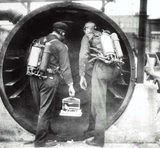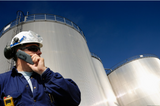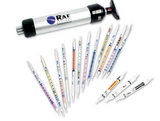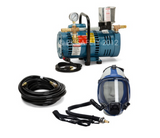Blog
Gas Detection Evolution: From Canaries to Portable Real-Time Devices
Working in confined spaces present three kinds of hazards: flammable or explosive atmosphere; oxygen-deficient or oxygen-enriched atmosphere; and atmosphere with a high concentration of contaminants. In poorly ventilated spaces, atmospheric contaminants build up to hazardous levels very fast and pose an immediate threat to life. To eliminate potential dangers while working in underground mines, tunnels, shafts, and other environments with confined spaces, it is important to use the right test
…
Apr 21st 2016
Gas Sensors: How Do Gas Monitor Sensors Work?
The sensors in your gas monitor work in different ways to keep you safe. Some wear out relatively quickly, while others could conceivably last forever. Here is a very quick overview to help you understand basic gas sensor technology. We hope this information will allow you to see the benefits of regular maintenance, bump testing and
calibration.
The most common sensors used in confined space work are Oxygen, % LEL (Lower Explosive Level), Carbon Monoxide, and Hydrogen Sulfide. Howeve
…
May 1st 2015
BW H2S Monitor Expiry: When is the Expiration Date for my Disposable BW Gas Monitor?
This is a great question about the
BW Clip Extreme H2S monitor, and I'm surprised we haven't had it before. A customer from our website asks "How long of a shelf life does the monitor have?"
The answer is each monitor has a unique turn-on date that is set one year after the manufacturing date. The warranty is tied to this manufacture date as well. BW provides a warranty for one year of shelf life plus the two years after activation.
If you have a monitor that is past its turn-o
…
Apr 14th 2014
Oil & Gas Facilities Moving Toward Multi-Gas Monitors
As oil and gas production continues to expand in the United States and other countries, many companies are seeing the benefit of personal gas monitors that check for more than just hydrogen sulfide. Refineries, processing plants, pipelines, storage farms, and offshore platforms all use or create a wide range of toxic gases and dangerous atmospheres. While single gas monitors like the
BW Clip 3-Year Detector H2S are ubiquitous, they aren't capable of warning workers of all the changing cond
…
Apr 7th 2014
A Home Inspection Gas Monitor - The Draeger Pac 3500 for CO
We recently received this review of the
Draeger Pac 3500 single gas monitor for carbon monoxide:
"I purchased the Draeger
Pac 3500 CO single gas monitor after a recent carbon monoxide-related death in a local restaurant. As a home inspector, I often go into a home that is vacant and turn on the heating system. If the levels of CO rise to a dangerous level, I might not know until it was too late.
"The Draeger unit is compact and easy to use. I like the digital readout so I do
…
Mar 26th 2014
Gas Monitors for Firefighters - Know Your Smoke
Even professional firefighters may underestimate the danger of smoke from simple fires say experts. Traditionally, firefighters have equated large emissions of hydrogen cyanide (HCN) or carbon monoxide (CO) with hazmat incidents or chemical plant situations. In reality HCN is present in almost every type of call - home, vehicle, dumpster fires, and many more.
Resources such as
gas monitors have traditionally mainly been used by confined space entry teams and hazmat response teams. Bu
…
Jul 2nd 2012
RAE Systems Gas Detection Tubes - How to Use Them
I recently got some questions regarding
RAE Systems Gas Detection Tubes and I wanted to clarify their use.
First, what are they? Gas detection tubes offer a quick way to determine the presence or concentration of specific chemicals in air. This is well established technology, and has been offered by a few manufacturers for many years. The theory is that specific reagents change color as they absorb certain chemicals. This color change, or stain, is predictable and measurable. This is
…
Dec 27th 2010
Isocyanate Detectors: Car Painting, Urethane Paints, Isocyanates, and Respiratory Protection
When working with dangerous chemicals, you should always research what you will be exposed to and how to best protect yourself from it. Here is a question about working with a dangerous chemical:
Does 3M make a respirator cartridge for isocyanate?
For the sake of this discussion, I think it is important we all know a little bit about isocyanate. It is a powerful irritant of the mucous membranes, the gastrointestinal tract, and the respiratory system. You can neither smell nor tast
…
Dec 2nd 2010









